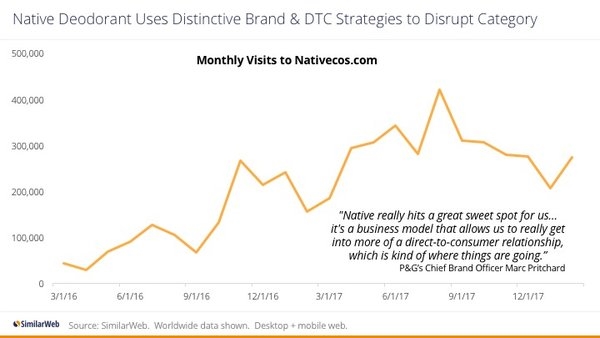Taking It To The Streets: 5 Success Strategies From The New Wave Of DTC Brands
For lack of a better phrase, brands and retailers have always been “frenemies.” They need each other. Retailers need products to sell, and brands have said products that need distribution. But they often have competing interests, and battle in a zero-sum war over the same pot of consumer dollars spent in a category.
Today, their relationships are even more complex: the digital ecosystem is shifting the balance of power to a few dominant retailers, while also empowering upstart brands to sell directly to consumers, even in categories once reliant on retail distribution. Eyeglasses, mattresses, home furnishings, apparel, and razors are among the categories transforming from “go-to-the-retailer-for-brands-you-know” to “at-least-consider-the-new-hip-company-selling direct.” Here I’ll explore five key strategies for Direct-To-Consumer (DTC) success.
1. A compelling brand story is crucial to breaking through “Amazon inertia”
“Amazon first” is a such an ingrained consumer habit that Amazon not only dominates e-commerce, it is increasingly where most product-related search activity happens. DTC brands must break through “Amazon inertia,” today’s e-tailing corollary of Newton’s Third Law — a consumer shopping on Amazon will continue shopping on Amazon. Saving a few bucks doesn’t motivate a switch. Consumers need a better reason to put forth the effort of a non-Amazon purchase: explore a new site, go to a different site to check reviews, go back to the brand site to enter new shipping/payment info and potentially do a shipping costs analysis, etc.
Breaking through Amazon inertia requires exceptional storytelling: Engage the emotions. Serve a larger purpose. Stand for higher quality. Make lives easier and better. Something about these brands must be above-and-beyond. Shinola tells a human story around supporting the community of Detroit. Native deodorant (bought by P&G) tells a story about natural ingredients and encourages consumers to “invest in themselves.”

2. A great customer experience is a must.
DTC brands must at least strive to match Amazon’s outstanding online experience: endless inventory, one-click purchasing, consumer reviews, free shipping, good service, easy returns. Obviously a high bar. Some DTC brands are succeeding by disrupting sub-par retail experiences. Casper and other DTC mattress brands leverage simplicity and service to replace a retail experience often characterized by overwhelming options and underwhelming service. For DTC clothing brand Bonobos (purchased by Walmart), a great customer experience started with reinventing the language of the experience; they have “ninjas” instead of sales associates and “guideshops” instead of flagship stores.
3. Think subscription.
Companies like the consistent revenue of subscription models; consumers like how they offer simplicity, predictability, and value. Dollar Shave Club leveraged the DTC subscription model to disrupt a previously retail-only category, and rose from viral video in 2012 to a $1 billion acquisition by Unilever in 2016 (they also offered a great customer experience, while in-store retailers were locking up razor blades to prevent shoplifting). Some subscription services also deliver (literally and figuratively) novelty and discovery with a “sampler pack” approach — examples include Birchbox (beauty products) and ArmourBox (athletic apparel).
4. Optimize channels by dancing with the giants.
Many brands can’t live by DTC alone; the power of the retail giants is too great. These brands must optimize their channels to maximize direct sales and Amazon sales. Last year Nike made headlines when they began selling on Amazon. Often lost in those headlines was that this decision was part of a broader “Consumer Direct Offense” initiative by Nike to maximize direct sales. They sell strategically on Amazon, offering specific products at specific prices, while largely reserving higher-margin flagship products for direct sales efforts on their own site. Hotel and airline brands have operated this way for years — trying to maximize their direct sales, while also strategically engaging with online travel agents (such as Expedia) to maximize sales there.
5. Execute with excellence.
Live by digital, die by digital. Thriving DTC brands are by necessity savvy digital marketers. They use digital market intelligence solutions for a full view of the digital space, including consumer activity on competitor sites and the retail giants. They are experts on data-driven decision-making. They are SEO masters. They strategically buy brand names (including their own) via paid search. They recruit and continually evaluate the right affiliates and referral partners. They track obsessively track conversion rates — across products, channels, and sites. They fight for percentage points of digital share as if their success depends on it … because it does.
MediaPost.com: Search Marketing Daily
(28)
Report Post






